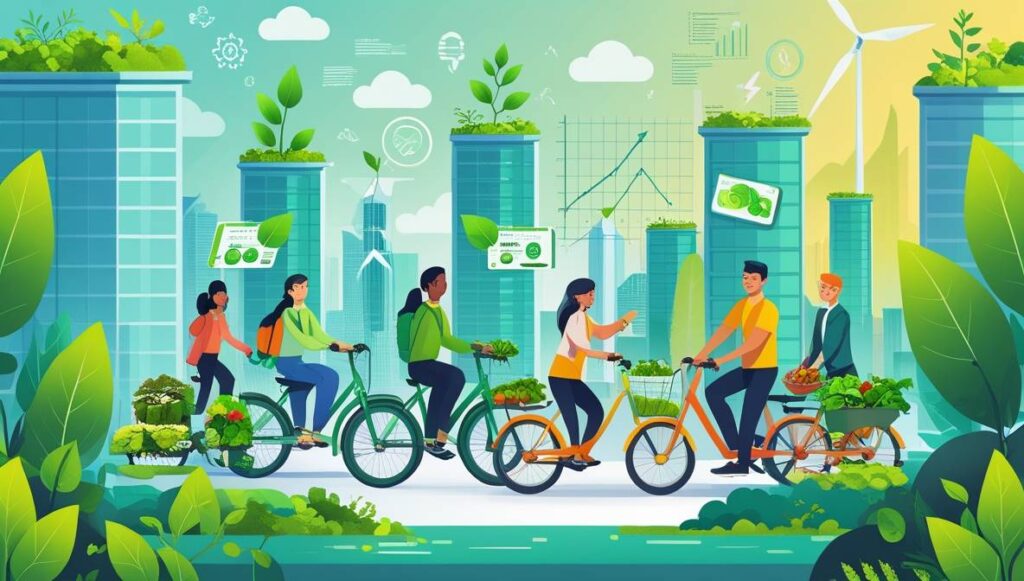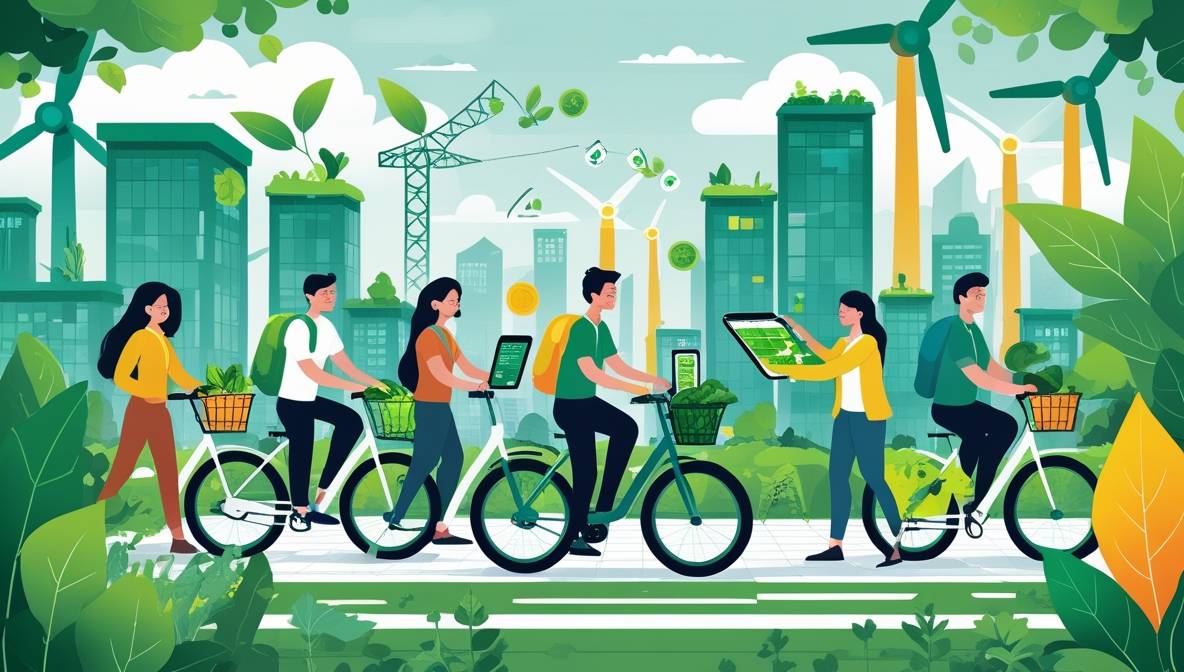Green loans have emerged as a vital tool for financing sustainable living. These financial products support eco-friendly projects, from residential solar installations to large-scale renewable energy initiatives. As we navigate 2025, the green loan market is experiencing significant growth, fueled by heightened climate awareness and supportive policies. This article explores green loans, their benefits, application processes, and the trends shaping their role in sustainable finance.
What Are Green Loans?
Green loans are specialized financing options designed to fund projects with positive environmental impacts. Unlike traditional loans, their funds are restricted to eco-friendly initiatives, such as reducing carbon emissions or enhancing energy efficiency. For instance, a homeowner might secure a green loan to install solar panels, while a business could use one to upgrade to energy-efficient machinery. The Green Finance Institute highlights their role in supporting energy-efficient home upgrades like insulation and heat pumps.
Benefits of Green Loans
Green loans offer multiple advantages, making them appealing for sustainable investments:
- Environmental Impact: They fund projects that reduce carbon footprints, such as renewable energy installations, contributing to global climate goals.
- Cost Savings: Energy-efficient upgrades, like solar panels, can significantly lower utility bills, offering long-term financial returns.
- Favorable Terms: Lenders often provide lower interest rates, as seen with offerings from EastRise Credit Union, making green projects more affordable.
- Government Incentives: Many regions offer tax credits or rebates for green projects, reducing overall costs.
- Reputation Boost: Businesses adopting green practices can enhance their appeal to eco-conscious consumers and investors.
How Green Loans Work
Green loans follow a structured process to ensure funds are used for sustainable purposes:
- Application: Borrowers specify the eco-friendly project, such as installing electric vehicle chargers.
- Verification: Lenders assess the project’s environmental benefits, often requiring alignment with standards like the Green Loan Principles.
- Funding: Approved funds are disbursed for the designated project.
- Reporting: Some lenders, as noted by Comundo, require progress reports to ensure transparency.
- Repayment: Borrowers repay the loan, often at lower interest rates, over a set period.
Eligibility Criteria
Eligibility for green loans varies by lender but generally includes:
- Creditworthiness: A strong credit history is typically required, similar to traditional loans.
- Project Viability: The project must demonstrate measurable environmental benefits.
- Compliance: Projects must adhere to local environmental regulations.
- Documentation: Borrowers may need to submit project plans or contractor quotes, as outlined by Fannie Mae.
Types of Projects Financed
Green loans support a diverse range of projects across sectors:
| Sector | Examples |
|---|---|
| Residential | Solar panels, energy-efficient windows, insulation, heat pumps, EV chargers |
| Commercial | LED lighting, HVAC upgrades, water conservation systems |
| Industrial | Energy-efficient machinery, waste reduction initiatives |
| Transportation | Electric or hybrid vehicles, public transit improvements |
| Agriculture | Sustainable farming practices, water management systems |
These projects align with global sustainability goals, as supported by initiatives like the UN Environment Programme.
Global Market Trends in 2025
The green finance market is projected to grow from $4.18 trillion in 2023 to $28.71 trillion by 2033, with a CAGR of 21.25%, according to Spherical Insights. Key trends in 2025 include:
- Standardization: The Loan Market Association introduced updated Green Loan Terms in January 2025, enhancing market transparency.
- Increased Adoption: Growing demand from borrowers and lenders, as seen with Bank of Baroda, reflects rising environmental awareness.
- Technological Advancements: Innovations in solar and battery storage technologies make projects more viable for financing.
- Regulatory Support: Governments offer incentives like tax credits to promote green loans, boosting market growth.
- Emerging Markets: Increased green bond issuance in Asia and Latin America drives global expansion, per S&P Global.
Case Studies
- UK Homeowner: A London resident used a green loan from Tandem Bank to install solar panels, reducing electricity costs and qualifying for a government rebate.
- Indian Business: A Mumbai textile factory secured a Bank of Baroda green loan to upgrade machinery, cutting energy use by 30% and boosting profits.
- US Municipality: Portland, Oregon, used green bonds to fund LED streetlights and bike lanes, lowering emissions and enhancing community livability.
How to Apply for a Green Loan
Applying for a green loan involves several steps:
- Research Lenders: Explore options from banks, credit unions, or online platforms like Santander UK.
- Define Project: Specify the eco-friendly project, such as installing heat pumps.
- Gather Documentation: Provide proof of income, credit history, and project details.
- Submit Application: Explain how the project meets green criteria.
- Await Approval: Lenders review the application and project viability.
- Use Funds: Allocate funds to the approved project, with some lenders requiring receipts.
- Repay Loan: Make timely payments, benefiting from lower interest rates.

Green Loans vs. Other Sustainable Financing
Green loans are one of several sustainable financing options:
- Green Bonds: Issued by governments or corporations to fund eco-friendly projects, per World Bank.
- Sustainability-Linked Loans: Tied to performance targets, offering rate reductions for meeting goals.
- Equity Investments: Fund sustainable companies but involve sharing ownership.
- Crowdfunding: Supports community-based green projects, like solar installations.
Green loans are ideal for individuals and small businesses seeking targeted project funding.
Role of Technology
Technology enhances the green loan market:
- Digital Platforms: Streamline applications and account management.
- Data Analytics: Assess project impacts accurately.
- Blockchain: Ensures transparency, reducing greenwashing risks.
- AI and Machine Learning: Personalize loan offerings and predict project success.
These advancements, as noted by 4IRE, make green loans more accessible.
Challenges
Despite their benefits, green loans face challenges:
- Greenwashing: Projects may not deliver promised benefits, requiring rigorous verification.
- Access Barriers: Limited availability in developing regions hinders global adoption.
- Regulatory Gaps: Inconsistent standards complicate financing, though efforts like the LMA updates aim to address this.
- Upfront Costs: High initial costs can deter borrowers, though long-term savings often compensate.
Future Outlook
The green loan market is set for continued growth, driven by technological advancements and increasing environmental awareness. Governments and financial institutions are expected to expand supportive policies, making green loans more accessible. As noted in Climate Policy Initiative, green banks are scaling investments in climate-friendly projects, further boosting the market.
Green loans empower individuals and businesses to contribute to a sustainable future. By financing eco-friendly projects, they offer both environmental and economic benefits, making them a cornerstone of sustainable living in 2025 and beyond.

